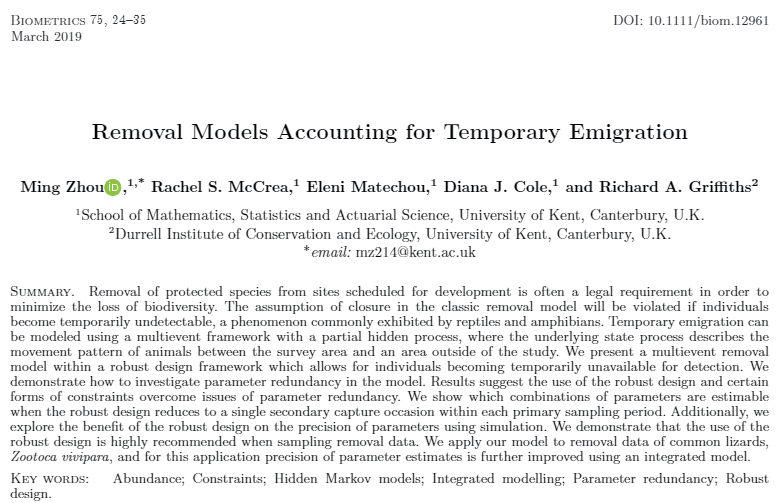Emily Dennis (Butterfly Conservation) and Byron Morgan (SE@K) have recently published a paper in Ecological Indicators exploring multi-species abundance and occupancy indices using Functional Data Analysis tools.
The full paper can be accessed here.
Functional data analysis of multi-species abundance and occupancy data sets
Emily B.Dennis, Byron J.T.Morgan, RichardFox, David B.Roy and Tom M.Brereton
Multi-species indicators are widely used to condense large, complex amounts of information on multiple separate species by forming a single index to inform research, policy and management. Much detail is typically lost when such indices are constructed. Here we investigate the potential of Functional Data Analysis, focussing upon Functional Principal Component Analysis (FPCA), which can be easily carried out using standard R programs, as a tool for displaying features of the underlying information. Illustrations are provided using data from the UK Butterflies for the New Millennium and UK Butterfly Monitoring Scheme databases. The FPCAs conducted result in a huge simplification in terms of dimensional reduction, allowing species occupancy and abundance to be reduced to two and three dimensions, respectively. We show that a functional principal component arises for both occupancy and abundance analyses that distinguishes between species that increase or decrease over time, and that it differs from percentage trend, which is a simplification of complex temporal changes. We find differences in species patterns of occupancy and abundance, providing a warning against routinely combining both types of index within multi-species indicators, for example when using occupancy as a proxy for abundance when insufficient abundance data are available. By identifying the differences between species, figures displaying functional principal component scores are much more informative than the simple bar plots of percentages of significant trends that often accompany multi-species indicators. Informed by the outcomes of the FPCA, we make recommendations for accompanying visualisations for multi-species indicators, and discuss how these are likely to be context and audience specific. We show that, in the absence of FPCA, using mean species occupancy and total abundance can provide additional, accessible information to complement species-level trends. At the simplest level, we suggest using jitter plots to display variation in species-level trends. We encourage further application to other taxa, and recommend the routine augmentation of multi-species indicators in the future with additional statistical procedures and figures, to serve as an aid to improve communication and understanding of biodiversity metrics, as well as reveal potentially hidden patterns of behaviour and guide additional directions for investigation.







